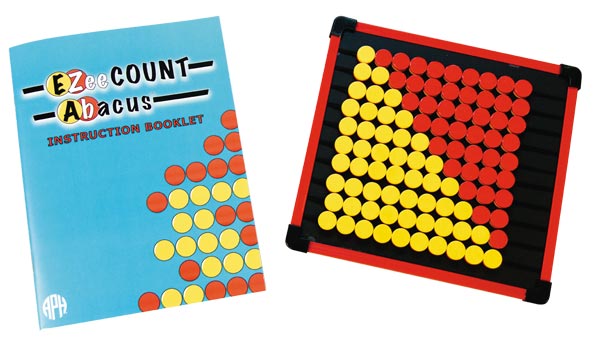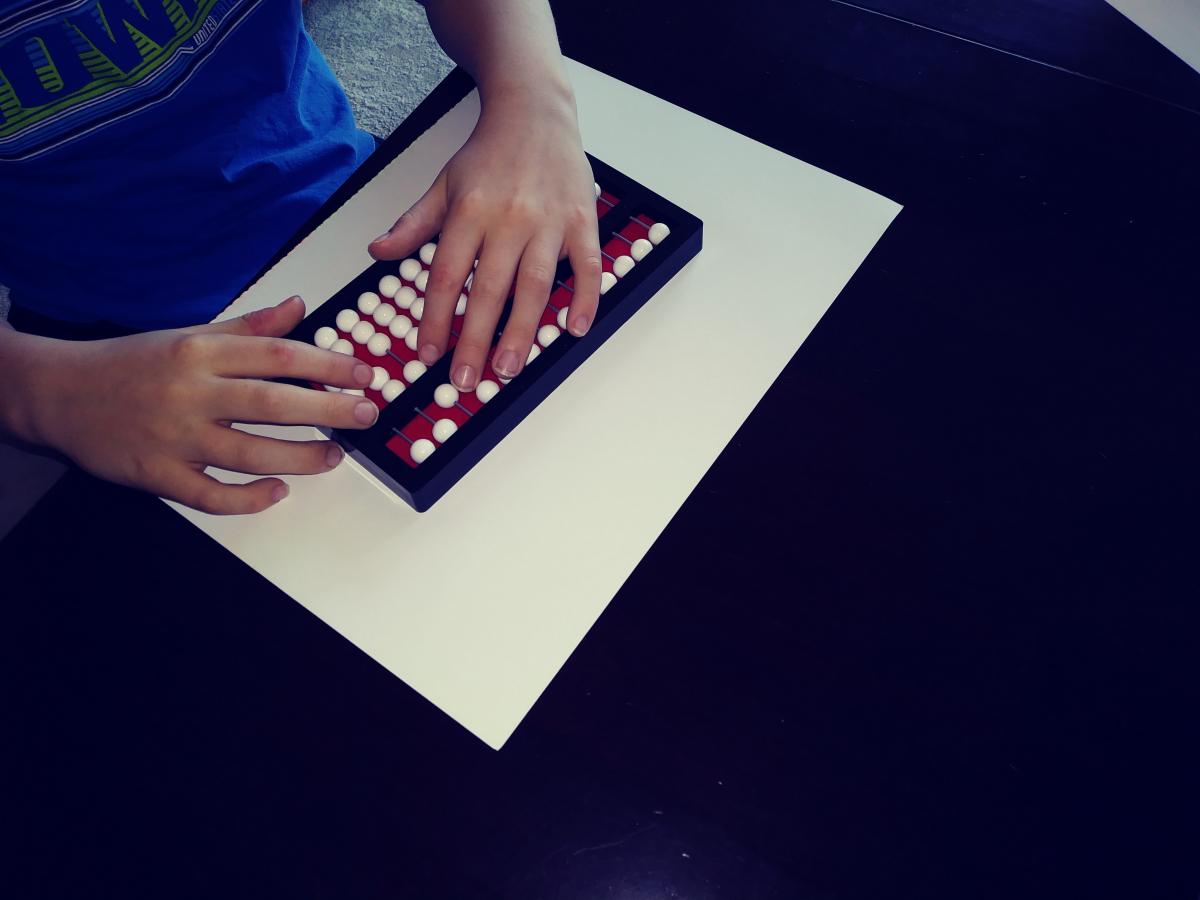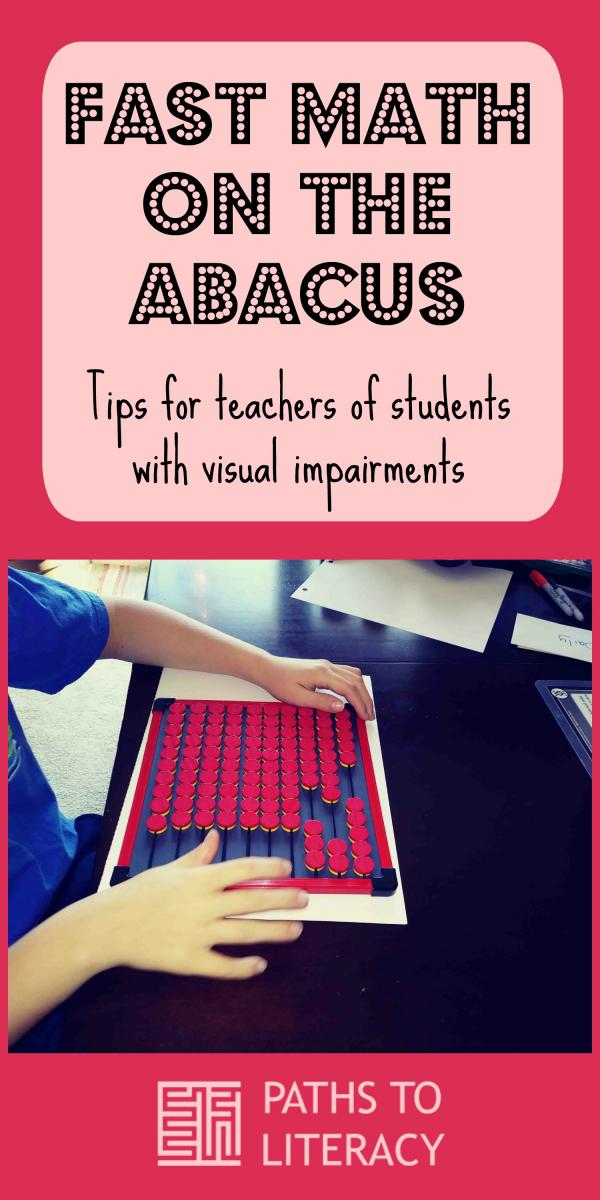Fast Math on the Abacus
Your answer is either right or wrong, no “almost” about it. It’s the first thing I tell my students when we start working on the abacus. You get it right, do another problem. You get it wrong, start over. The one place in life where you get endless do-overs is math. The next thing I tell them is the mission: to get good enough to find the answer fast and that can only happen through practice.
Learning to Use an Abacus
I learned how to use the abacus last Thanksgiving break. It took me four days to learn the soroban from counting to division. I say "soroban" because our lovely adapted tool, the Cranmer is essentially a Japanese abacus. The way I could accomplish such a feat had everything to do with the learning tool…the best abacus app I’ve found so far, Know Abacus. It’s available on Android, iOS, and even Chromebooks. If you can’t have ads in your district, put your device on airplane mode.Now you might be wondering, is this app accessible to our students? No. Not in the way you’re asking. I find it is most helpful for teachers who want to practice their skills, and for supporting lessons through presenting problems and solutions that a sighted teacher can use together with a student with visual impairments.
Teachers May Be the Biggest Obstacle to Students Learning the Abacus
If you can believe it, we are the main reason our students move slowly through the abacus. Maybe you’re finding the answers along with your student and that requires moving through the beads, stopping to check if the student is doing the same and then double checking the answer once you’re both done. Maybe you’re not very comfortable using an abacus. Maybe math isn’t your thing. Maybe you took one class that covered it and that was forever ago. Let’s take care of these possibilities by changing the approach to teaching the abacus.
Before you start a lesson, be good. Know your stuff. Understand the terminology. If you don’t know it, hit a coffee shop with your Cranmer, your Know Abacus app, and a fancy coffee and get good. I say this because our comfort level translates quickly to our students. We fly over the beads, our students want to fly faster.  Also, know that the Cranmer is not the only abacus available through APH. Check out the catalog and work with your student. What kind of learner is your student? Concrete to the point she won’t let loose of the one squares, ten sticks, and hundred blocks? Can she make the leaps required to click away on the Cranmer? Is she able to make the Cranmer work in the classroom, or are you just ticking off an ECC standard? In any of these cases, think beyond the Cranmer and seriously consider the EZeeCOUNT abacus through APH. The name is misleading. This is a counting try that’s been around for thousands of years just like any other type of abacus. You can perform counting, addition, subtraction, multiplication, and division. And the rest of the world doesn’t call it EZ anything. They call it a 100-bead abacus.
Also, know that the Cranmer is not the only abacus available through APH. Check out the catalog and work with your student. What kind of learner is your student? Concrete to the point she won’t let loose of the one squares, ten sticks, and hundred blocks? Can she make the leaps required to click away on the Cranmer? Is she able to make the Cranmer work in the classroom, or are you just ticking off an ECC standard? In any of these cases, think beyond the Cranmer and seriously consider the EZeeCOUNT abacus through APH. The name is misleading. This is a counting try that’s been around for thousands of years just like any other type of abacus. You can perform counting, addition, subtraction, multiplication, and division. And the rest of the world doesn’t call it EZ anything. They call it a 100-bead abacus.
Using the Know Abacus App to Support Your Lessons
Once you’re proficient and you’ve chosen the right tool for the job, tell your students you have a handy-dandy app that will give you all our problems. The app uses the logic method where you work with addends of five and ten and not the counting method where you are slightly removed from the actual meaning of the numbers. The app is still helpful with the more concrete learners who need to rely on the EZ abacus.
If you’re just starting out, count away. Use the app. It will give you random numbers. Alongside your student, you perform the task on the app as well as on a spare Cranmer (or EZ abacus) if you have one. The trick here is to move quickly as soon as your student is ready. Then move to addition. Start with direct adding where all the beads are available. Tell them what direct adding means. Your problems will look something like this, “Show me (or set) 9, minus 2, plus 1. What’s your answer?”. Keep going. The pace is meant to be quick, not over their head and don’t rush them, but tell them this is fast math. Spend time focusing on the motion of clearing and setting and reading the beads. Remember, the abacus is fun math time. It’s all about go, go, go. You can use it to warm up when you start working on math or you can use it as a reward after learning certain math skills the rest of the class is working on.
Using the Cranmer Abacus
For the Cranmer, practice, practice, practice. Do not move on quickly, but throw out little teasers. Most kids want what’s next more than what they’re doing now. Use that as an incentive if you hit a rough patch or a difficult concept. Use your words. Pre-teach those addends (partners) of five and ten. Pull in other tools if you need to like snap beads. Give your student five snap beads and tell them they can break it up in two pieces any way they can. Do this with addends of ten. Teach place value, up to thousands or greater. Have fun with them when they push all the beads to the counting bar and tell them that number instead of “you tell me that number.” Tell them because this is a chance to pretend being winded and theatrical. Emphasize this tool is actually mightier than it seems, it goes up to 9+ trillion!

Using the EZee Count Abacus
On the EZ abacus, if you haven’t reached the point in learning where you assign place value because your student is still counting by ones and tens, no problem! There are still wonderful lessons to explore. Go to settings on the app and change to hard double-digit problems. Then give your student something like, “Show me 48, minus 2, minus 24.” Tell them to take the shortcut (meaning push over four rows of ten beads and then 8 ones). This teaches them to break up their numbers and new math is all about breaking up numbers and understanding how numbers relate to each other.

Be a Math Cheerleader!
The Know Abacus app is the crux of my fun fast math method, but as you see, knowing the tool you choose for your student and being an almost math cheerleader all work together to engage and push your student. If you need more practice on using or teaching the abacus, think of your search words. There might not be endless videos available on YouTube if you type in "Cranmer", but if you type in "soroban", just watch. If you type in EZeeCOUNT abacus, you’ll find even less than your search for the Cranmer. Type in "100-bead abacus". Please note, the traditional 100-bead abacus uses the opposite place value scheme as the EZ abacus. One, tens, hundreds…start at the top on the EZ and at the bottom on the traditional. Now, get clicking and get good and find the fun so you can share it with your student!

